Introduction
Facing a removal order in Canada can be a stressful and challenging experience. Understanding the different types of removal orders, the process involved, and your rights can help you navigate this difficult situation more effectively. This guide provides detailed information on removal orders in Canada, including how to respond and what steps to take if you receive one. We are here to help you through every step of this process, ensuring you have the support and guidance you need to navigate this challenging time.
How We Help You
Navigating a removal order can be overwhelming, but you don’t have to do it alone. Our team is dedicated to providing comprehensive support throughout the entire process. Here’s how we can assist you:
- Legal Consultation: We connect you with experienced immigration lawyers who can provide expert advice and representation.
- Document Preparation: Our team helps you gather and organize all necessary documentation to build a strong case.
- Appeal Filing: We assist you in preparing and filing your Notice of Appeal, ensuring all requirements are met.
- Representation at Hearings: Our legal professionals can represent you at appeal hearings, presenting your case effectively.
- Ongoing Support: We provide continuous support and guidance, answering any questions you may have and helping you understand your rights and obligations.
For more information and personalized assistance, book a consultation with our team today. We are here to help you navigate this challenging time and ensure the best possible outcome for your situation.
What is a Removal Order?
A removal order is an official document issued by the Canadian government requiring an individual to leave the country. Removal orders are typically issued when an individual is found to be in violation of immigration laws. There are three main types of removal orders:
- Departure Order: Requires the individual to leave Canada within 30 days. If they comply, they may return to Canada in the future.
- Exclusion Order: Bans the individual from returning to Canada for one year. If the exclusion order is issued for misrepresentation, the ban extends to five years.
- Deportation Order: Permanently bans the individual from returning to Canada unless they receive written permission from the Canada Border Services Agency (CBSA).
Common Reasons for Removal Orders
Overstaying a Visa
Remaining in Canada beyond the authorized period.
Criminal Activity
Committing a crime while in Canada.
Misrepresentation
Providing false or misleading information on immigration applications.
Violation of Conditions
Failing to comply with the conditions of your stay in Canada.
Steps to Take if You Receive a Removal Order
Understand the Type of Order: Determine whether you have received a departure, exclusion, or deportation order.
Seek Legal Advice: Consult with an immigration lawyer to understand your options and rights.
File an Appeal: If eligible, you may appeal the removal order to the Immigration Appeal Division (IAD) within 30 days of receiving the order.
Prepare for Departure: If an appeal is not possible or unsuccessful, make arrangements to leave Canada by the specified date.
Appealing a Removal Order
- Eligibility: Not all removal orders can be appealed. Departure orders and exclusion orders can be appealed under certain conditions, while deportation orders generally cannot.
- Process: File a Notice of Appeal with the IAD. Prepare your case by gathering evidence and documentation to support your appeal.
- Hearing: Attend the appeal hearing, where you will present your case. You may bring witnesses and legal representation.

Tips for a Successful Appeal
Understand the Grounds for Removal: Address each point raised in the removal order.
Gather Strong Evidence: Provide clear and convincing documentation to support your case.
Seek Legal Advice: An immigration lawyer can guide you through the appeal process and represent you at the hearing.
Be Honest and Transparent: Ensure all information provided is accurate and truthful.
Frequently Asked Questions (FAQ)
The appeal process can take several months to over a year, depending on the complexity of the case and the backlog at the IAD.
If your appeal is denied, you must comply with the removal order and leave Canada. You may have the option to seek judicial review or reapply for entry in the future.
CLIENTS REVIEWS
What Our Happy Customer Says
About Land2Air Immigration Services





